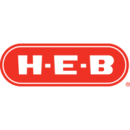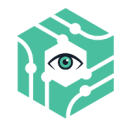Peter Stradinger, front-end team lead at LogicMonitor, has a hard and fast rule: no one works between the daily, evening demo meeting and the following morning’s sync-up. This strategy allows him to set boundaries that would otherwise naturally exist in person, which his direct reports appreciate. But it’s only one of the ways engineering teams have adapted to working from home.
The following eight tech professionals have made tool and rule adjustments, like asking presenters to share their screens and using digital Kanban boards for project visualization purposes.
“Visual feedback helps bring out emotional nuance of conversations, which is key to clear communication,” Bright Health’s VP of Data Engineering Zheng Zhu said about having employees turn on their webcams.
And while the new structure might take some getting used to, the purpose behind the daily sync-ups hasn’t changed. That’s why advice from VPs and engineering managers across Austin boils down to similar directives: keep sync-ups short and make sure everyone is equally involved. If that means saving in-depth discussions and questions until the end of the session, it’s worth restructuring the meeting in order to do so.

At Shipwell, the key to productive daily sync-ups is efficiency. Engineering Manager Nick Fortenberry said that he and his colleagues push for a strong “video on” culture so that that team feels connected to one another and ready to tackle the day. He and Senior Engineering Manager Harper Maddox often start their sync-ups by sharing a big win, positive customer feedback or by prompting a quick chat about everyone’s weekend.
What does a typical sync-up look like for your team, and how do you structure those meetings to ensure they're as effective as possible?
Fortenberry: In this new pandemic era, Shipwell, like many companies, had to quickly switch to remote working, significantly impacting the way almost all communication was handled. Our daily syncs were largely impacted. In-person communication will always have its advantages, so we’ve tried our hardest to keep a strong and transparent form of communication flowing, especially in our daily syncs.
Each team formats their sync-ups slightly differently depending on the group. However, the general structure is the same. Since these meetings are now all virtual, the team leader will share their screen with the sprint board. This allows for us to get a visual representation of how closely we’re tracking toward completing our sprint goals.
We always answer the three following questions in our meetings: “What did you do yesterday?” “What are you doing today?” and, “Do you have any blockers?” Anything outside of these questions, such as clarity around requirements, are moved to a post sync-up, where the parties who are not invested in the topic can drop off the call.
What’s one thing you’ve done to improve the effectiveness of your stand-up meetings?
Maddox: Once we passed the 20 employee mark, our daily standups were taking too long. Even with everyone nonverbally communicating “wrap it up” to our long-winded friends, they tended to drag on for 30 minutes to an hour every day. We were a tight-knit team but that connectedness was costly. A lot of the meeting was just noise. Then Charles Dickerson, our new VP of engineering, came along and rolled out the “squad model.”
The squad model was popularized by Spotify but the core concepts have been around for a long time. Divide your organization into cross-functional teams that combine product and engineering expertise. Squads are nimble enough to wrap up a standup in 10 minutes but robust enough to tackle a quarterly roadmap. They effectively align resources based on business value and can help you reduce inefficiency.
However, unless you put in the effort, squads can easily become siloed. Without communication and paths across the teams, organizational knowledge fades away and you’ll have trouble operating as a cohesive unit. For this reason, we’ve adopted chapter meetings (hard groupings like back end and front end), guild meetings (soft groupings like SRE and API), and rotations across the squads. Still, the downsides are small compared to the gains we received with our sharper focus on product.
Once we passed the 20 employee mark, our daily standups were taking too long.’’
Sync-up meetings can have a tendency to feel repetitive or boring after a while. What’s one strategy you’ve found to be critical for keeping employees engaged throughout these meetings?
Maddox: Many people hate meetings because they can be a waste of time. The time wasted could be better spent coding, adding a couple more unit tests or farming karma on Hacker News. We get annoyed when someone rambles about some niche topic that we never interact with and don’t find interesting. So the first trick is not to go on a diatribe about the chain of events that led to broken search indices on the dev environment. We have a term for this on the internet: “TL;DR.”
Next, move all discussion to the end of the standup. Doing so allows the group to get to the point of the meeting immediately. Often, the whole team will log on as we discuss a few key topics and then those interested in a deeper dive will stay. Those are the people who want to know the root cause of the outage or are curious as to why Svelte is the new hotness.
“I had an appointment yesterday so I didn’t get to do much work.”
According to VP of Data Engineering Zheng Zhu, this is a common refrain heard in meetings that are designed around traditional frameworks. That’s why at Bright Health, engineers rely on Kanban visualization boards for sync-ups. When the team’s focus is on the board, he’s found that it’s less likely they’ll be distracted by such side comments.
What does a typical sync-up look like for your team?
Sync-ups should occur daily and be focused on helping the team make progress on the work at hand. Because our teams are now remote, we have everyone turn on their webcams. Doing so helps remind our teams that we are still working alongside our peers and that nothing has changed about our relationships. Visual feedback helps bring out emotional nuance of conversations, which is key to clear communication.
Sync-ups should typically take around 15 minutes. That way, you have enough room to go over issues pertaining to a two-pizza-sized team and aren’t left with time for unrelated or detailed side discussions. Lastly, have the person leading the standup share their screen. This tool takes the place of a whiteboard. It ensures that everyone is focused on the same thing.
Visual feedback helps bring out emotional nuance of conversations.’’
What’s one thing you’ve done to improve the effectiveness of your stand-up meetings?
A commonly used framework is to have everyone on the team go over the following questions: What did I work on yesterday? What am I working on today? What issues are blocking me?
Our engineering teams at Bright Health have shifted toward a different approach. We focus on the Kanban board, letting that approach drive the flow of statuses and conversation. Specifically, we start from the right side of the visualization board, which contains items that are nearing completion in our Agile flow. The idea is that, as a team, we should swarm around unblocking and completing those first so that we achieve value from our work sooner rather than later.
That said, engineers who have already completed their sprint work aren’t represented with this approach. However, the Agile process itself can address this type of loophole. There should be a well-groomed backlog and a clearly communicated process to pull from when an engineer has no tickets on the board. Our engineering teams that have adopted this strategy have seen a general increase in our feature cycle time and value delivery for our stakeholders, leveraging the time allotted for these meetings more effectively.
What’s one strategy you’ve found to be critical for keeping employees engaged throughout these meetings?
With concerted focus on the work at hand, we typically have high levels of engagement in these meetings. The repetitiveness is not a challenge because the work continues to change daily and from meeting to meeting. We try to create a strong sense among attendees that we are working as a cohesive team toward clear goals.
Because everyone takes turns discussing issues on the board, there’s typically little opportunity for someone to become or stay unengaged. Lastly, when there’s a list of next steps being populated in real time during the discussion, vigilance is key.
At H-E-B, engineers assign “time trolls” to each sprint so that everyone stays on course. Technical Project Manager Lacy Llana said that it’s helped keep team members aware of and ready for what’s next. But at the end of the day, there’s no one-size-fits-all approach to any meeting, Agile or not.
Her theory? Let the team dictate the format that works best for them.
What does a typical sync-up look like for your team?
Each morning, we walk through our team’s Jira board, filtering by team member. Each person gives an update on what they worked on the day before, what they plan on working on that day, and brings any blockers to the team’s attention. We focus on those points and if we start “solutioning” too in depth, we pause and take note that we need a parking-lot discussion for that topic.
Since going remote, we spin off parking-lot Zoom calls and share the links in Slack for anyone who needs to be involved to join. We also elect a “time troll” each sprint to give us warnings as we approach our meeting end time.
We elect a ‘time troll’ each sprint to give us warnings as we approach our meeting end time.’’
What’s one thing you’ve done to improve the effectiveness of your stand-up meetings?
Initially, we were not using Jira during standups. During the meeting, team members would have to try to remember everything they were working on, which is a struggle first thing in the morning, and the conversations tended to get off topic. At the end of our sprints, we saw a mad dash to update tickets and a potential for tickets to get overlooked or even go uncreated if the work was unplanned.
Using our Jira board to structure our standup has made for a more streamlined sync and better understanding of the work in flight.
What’s one strategy you’ve found to be critical for keeping employees engaged throughout these meetings?
Aside from keeping the meeting on track and moving quickly, I believe the most important thing in keeping a team engaged is to reinforce the idea that the process belongs to them. The standup I’ve described above isn’t a one-size-fits-all solution.
Team members should feel empowered to say, “These meetings aren’t effective or beneficial,” and to help continuously approve the format. Creating a space where team members feel safe to share their ideas or concerns is key to building not just an effective sync-up but also a high-performing team.
At SpyCloud, meetings haven’t lost their personal touch since the team went remote last spring. Vice President of Engineering Ronak Patel said he relies on a lot of documentation and a little bit of fun to keep everyone headed in the same direction –– sometimes even encouraging other departments to join.
What does a typical sync-up look like for your team?
Since March, the SpyCloud engineering team has been working remotely. While we’ve made minor adjustments, our remote standups look and feel a lot like our in-person meetings, with intention on focus, inclusion and documentation. In order to keep our time together productive, we circulate an agenda beforehand. We rotate who leads the standup so we stay on track and have someone take notes.
It seems obvious, but these points have become doubly important now that we find ourselves in more meetings. We need to be even more efficient with our time.
What’s one thing you’ve done to improve the effectiveness of your stand-up meetings?
Documenting everything is the key to successful remote teams. We are more effective because we’re diligent with taking and distributing meeting notes and action items. We also capture task status in Jira and chat over Wire, our collaboration tool. Communication is key!
We leave time for watercooler talk, which is important since we don’t get to see each other in person.’’
What’s one strategy you’ve found to be critical for keeping employees engaged throughout these meetings?
We leave time for watercooler talk, which is important since we don’t get to see each other in person. We also added tech demos. We invite people from other parts of the organization to join our standups so we stay connected and engaged with the rest of the company (and vice versa). Outside of standups, we make time for socializing over video games or cracking each other up over a quick game of skribbl.io.
At LogicMonitor, Frontend Team Lead Peter Stradinger said senior engineers help junior engineers adjust to deadlines by separating larger projects into more manageable pieces. He credits end-of-day demos, where peers share the details of certain individual projects with one another, with the focus and excitement he’s used to seeing on faces across his screen.
What does a typical sync-up look like for your team?
Since COVID-19 has us working from home, we’ve restructured our meetings to help provide a more office-like environment. We hold a quick meeting at an agreed-upon time every day, first thing in the morning. It gets us out of bed and engaged with what we’re about to do. The meeting is partly to say “hello” to each other and partly to coordinate around who is working on what. Each person supplies a falsifiable target for what they’d like to demo at the end of the day. It needs to be a small, achievable, concrete thing. We look at our calendars while doing it, so we take into account any meetings, personal appointments and lunch plans, as well as how big our blocks of time are. We also use this meeting to coordinate whether we want to pair with others. I record the targets that each person in the team states.
We end our days with a 15-minute meeting as well. It’s paramount that we have effective boundaries in order to keep work-life balance reasonable. I have a hard rule that nobody works after the demo until the coffee/tea meeting the next day. Working extra is not socially rewarded.
If someone doesn’t hit their target, we kindly talk it through and try to understand what happened. Often we discover that there was an external blocker that slowed us down. When we uncover those things, we write them down and remember them for retrospective. That way, we can factor those blockers into our coffee/tea discussions when we’re developing future targets. We've found that if we’ve structured our work well, we tend to have impressive demos about every other day. It’s a very high-energy meeting and it makes the team feel good about what they’ve done.
What’s one thing you’ve done to improve the effectiveness of your stand-up meetings?
Honing in on what will be demoed at the end of the day really focuses people. If you’re working on a specific project for four days, you need to make a plan for what you can show for each of those four days. There are different ways of planning complex tasks, and it enables the more experienced team members to help the more junior ones get oriented on how to set useful milestones.
We’ve had surprisingly few slippages since we implemented this. A dev can only drift down an obviously bad path for at most one day.
When you see your peers demoing cool things, it makes you want to do the same.’’
What’s one strategy you’ve found to be critical for keeping employees engaged throughout these meetings?
The demo is key. Thinking about giving status updates is boring and stressful. When you see your peers demoing cool things, it makes you want to do the same. When we all achieve together, we celebrate and leave work feeling happy. We often cheer, back-pat and encourage in the demo meetings.
Once every three weeks, we combine the feedback about our process and have a 30-minute discussion about how we can improve it. The shape and timing of these meetings, along with the firefighter role and the technical design reviews, are all resources that have come out of retrospectives.
Technical Program Manager Heather Hull tries to ensure that during daily sync-ups at AffiniPay, everyone speaks for around the same amount of time. That way, no one feels bulldozed or taken for granted. In an effort to keep meetings on track, Hull said she saves side topics for the end of the huddle so people with an urgent task or long to-do list can drop out when necessary.
What does a typical sync-up look like for your team?
In our daily standup, each team member talks about what’s changed since the day prior, what’s planned for that day and whether anything is blocking their work. The focus is on whether our project is progressing as expected. We try to make these meetings short and leave the in-depth problem solving to another time.
What’s one thing you’ve done to improve the effectiveness of your stand-up meetings?
The key to our success is the relationships our team members have with one another. Now that we’re working remotely, we try to make sure everyone’s camera is on so we can better connect. I think that’s been a key to maintaining the trust and friendships we had already established when we all worked together in the office. We also work to provide an open and transparent atmosphere so everyone feels comfortable speaking their mind. Everything is on the table and everyone is encouraged to participate at whatever level they are comfortable with.
The key to our success is the relationships our team members have with one another.’’
What’s one strategy you’ve found to be critical for keeping employees engaged throughout these meetings?
We try to keep our standup as short and focused as possible. Ideally, we save side topics for the end of the meeting so people can drop out when necessary. We also frequently discuss milestones that are a bit farther out in the future and make sure everyone understands the larger goals we have in mind. We don’t just focus on the current sprint.
Once the team went remote, Pushnami VP of Software Development Mitchell Taylor said he discovered that incorporating a “popcorn”-style approach to passing the verbal baton during sync-ups keeps developers alert and involved. As a result, the 10-minute daily meetings feel productive and engaging.
What does a typical sync-up look like for your team?
We meet for our standups at the same time each morning and each member delivers an update about what we worked on the previous day, what we plan to work on, roadblocks, etc. Keeping a target time limit is critical to maintaining an efficient and productive standup.
Keeping a target time limit is critical to maintaining an efficient and productive standup.’’
What’s one thing you’ve done to improve the effectiveness of your stand-up meetings?
Working remotely has introduced some changes to the way we hold meetings. With most members calling in, we noticed our stand-up meetings started to lose some of the natural cadence we had standing in a circle. As an alternative approach to a single stand-up facilitator, we ran several standups where each member would call out another who has not yet delivered an update. This approach seemed to encourage more engagement between members and form a more active discussion on how we plan to meet the goals of the day as a team.
What’s one strategy you’ve found to be critical for keeping employees engaged throughout these meetings?
Having an ice-breaker can be a quick way to boost engagement and energy in our morning meetings. It can also be a useful way to set the tone for the meeting and the rest of the day. At the start of our standup, we typically do a quick review of which projects are ongoing, recent achievements and milestones.





















